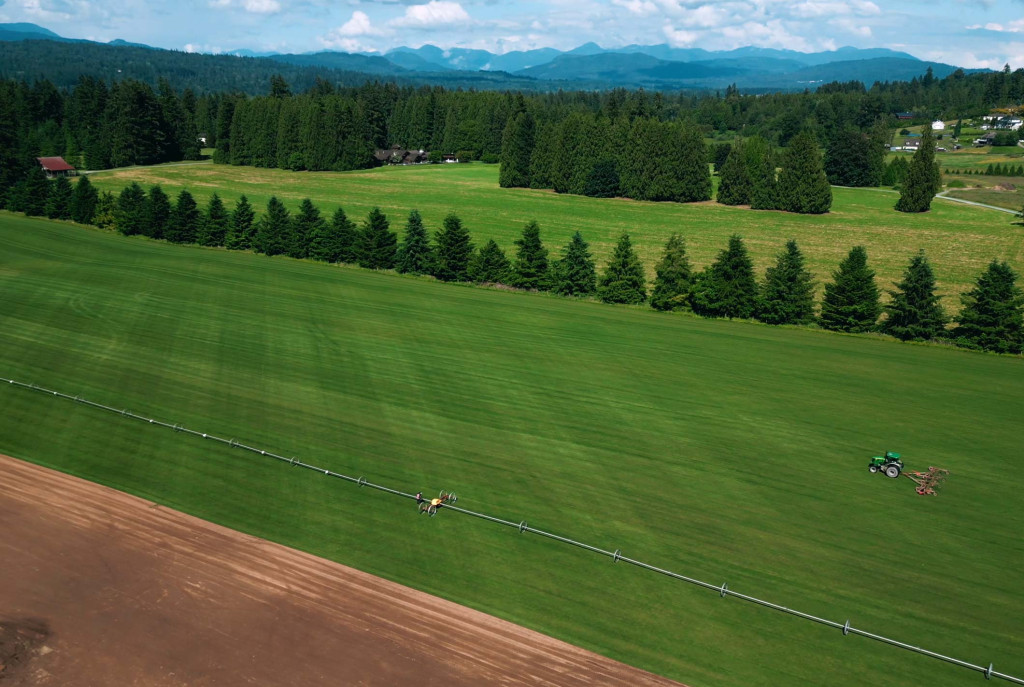
Whether you love them or hate them, dandelions are a common presence in the summer lawn. For homeowners looking to achieve a lush green lawn this summer, dandelions can be a source of endless frustration. Especially for homeowners who are determined to be environmentally conscious. The good news? There’s more than one way to weed a lawn!
Dandelions are a particularly resilient broadleaf perennial that often move in when a lawn is stressed or damaged, and can quickly take over thanks to their prolific self-seeding and ability to re-grow from broken taproots. But by understanding a little about their growth habits and preferences, homeowners can choose effective removal methods without relying on harsh chemicals. Here are six, tried and true methods for winning the war against dandelions in the residential lawn.
Dandelions are, first and foremost, some of the world’s most effective opportunists – they thrive in poor soils and quickly move in where other vegetation has moved out – like a thinning lawn. Once established, it’s only a matter of time before seed heads are produced to flood the property with thousands of dandelion seeds.
By promoting a dense, healthy lawn and allowing it grow a little taller (skip the buzz cut!), homeowners can create a habitat that’s uninviting to dandelions – one that will both outcompete and suppress dandelions outbreaks before they ever happen. After all, it’s hard to sprout a seed when there’s nowhere for it to land or it never sees the sun!
Tip: Turf grasses that are allowed to grow to 3-4” in height have been shown to be highly effective at suppressing weed seeds in the lawn.
While it won’t necessarily kill the dandelions that are already present in the lawn, homeowners can dramatically reduce the number of new dandelions that appear simply by mowing often.
Like many weeds, dandelions rely on wind dispersal to spread their seeds, sending up tall flower and seed stalks to better catch the breeze. By mowing regularly, homeowners can remove the majority of dandelion flowers before they have a chance to transform into the white puff-balls so many homeowners love to hate.
For homeowners who only have a few dandelions sprinkled throughout the lawn, investing some quality time in removing the weeds by hand is the single most effective method of control. To make the task easier, we recommend using a small garden tool (screwdrivers work well in a pinch) to loosen the soil around the taproot before pulling it out. Dandelion tap roots can be up to a foot deep (or more) into the soil, and are very brittle, meaning they snap easily. Unfortunately for homeowners, dandelions can grow back from root pieces left behind, so be sure to carefully remove it all!
Tip: It’s often easier to pull weeds from wet soil than dry, so take advantage of your next rainstorm by getting outside and weeding right after!
Dandelions don’t always oblige us by growing in easy to weed places. These opportunistic plants are well known for growing in cracks and crevices around sidewalks and patios. Before reaching for the dandelion weed killer chemicals, try using vinegar. The mild amount of aecitic acid in vinegar makes it a surprisingly effective weed killer; plants often look dead within a matter of hours. The best part? Vinegar is completely environmentally friendly!
Tip: While vinegar is environmentally friendly, its effectiveness isn’t limited to dandelions – it can easily kill surrounding plants if not carefully applied.
When homeowners find themselves facing a particularly dense patch of dandelions, hand weeding, mowing, and spraying each plant individually may not be a practical solution. When this happens, smothering can be an effective approach.
Like all plants, dandelions require sunlight to photosynthesize and air to ‘breathe.’ By covering particularly infested patches with cardboard, layers of newspaper, or even a dense covering of mulch and keeping the covering in place for several days, homeowners can quickly and effectively kill off an entire patch of weeds without the need for herbicide.
Tip: When killing off a patch of weeds, it’s important to have a plan. If the bare spot isn’t quickly seeded or sodded, the weed seeds commonly found in the top layer of soils will quickly take advantage of the lack of competition and take over – leaving the homeowner right back where they started.
Sometimes lawns are simply too far gone to effectively weed and nurture back to lush health, and the reason for that is simple: lawns that are 50% or more pure weeds will have a staggering amount of weed seed built up in the soil surface – and any attempt to weed or repair will only trigger more weeds to grow.
When it reaches this point, we strongly recommend our clients consider starting over with a new sod lawn. Here’s why:
Dandelions can be a challenging opponent, but armed with a little know-how and some basic tools, they’re manageable in eco-friendly ways. And when all else fails, there’s always the option of starting over.
Order fresh sod now or request a custom quote for your project.
Save with a Yearly membership. Custom fertilizer program. Fertilizer, topsoil, seed delivered to your door before you need it. Don’t forget, we will remember for you!
Western Turf Farms Abbotsford
39183 No.5 Road Abbotsford, BC V3G 2G3
Western Turf Farms Langley
7880 240 Street Langley, BC V1M 3P9
© Copyright 2025, all rights reserved by Western Turf Farms. By using our website you agree to our Disclaimer and Privacy Policy.